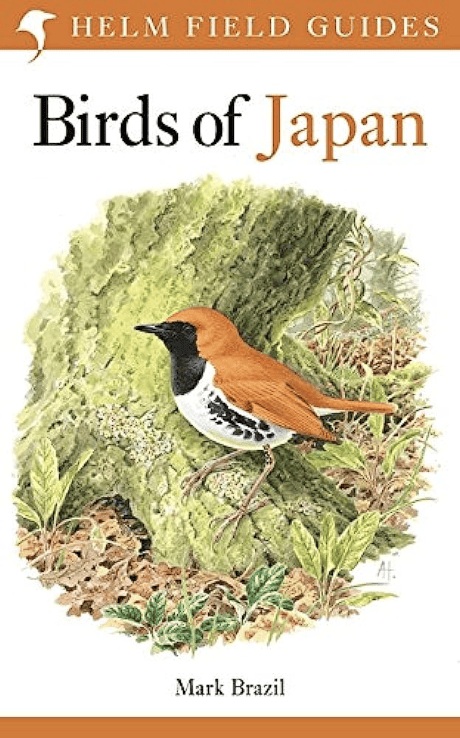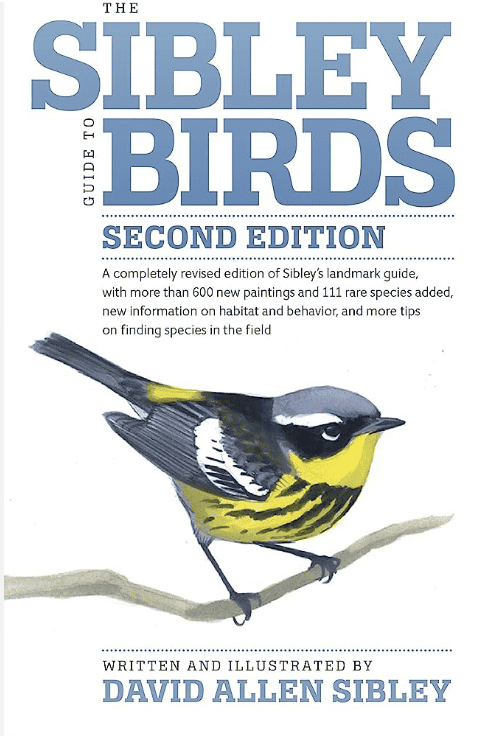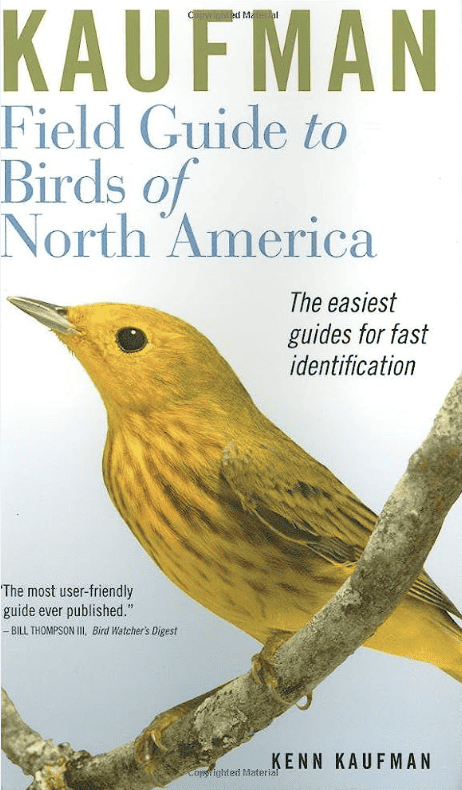Top Birding Guide Books
A birding guidebook ranks high among the must-have components in every birdwatcher's gear—particularly if you're new to birdwatching or general wildlife enjoyment. Also, if you've discovered a new passion for feeding avian creatures, you'll find immense value in these books.
You'll gain insights into bird biology and identification and learn some natural history facts and tips for tracking a specific species.
But, as you've realized already, the broad range of field guide options for budding and seasoned birdwatchers can overwhelm you. Fortunately, this guide will simplify your job, helping you identify the top bird books to consider. In addition, you'll learn the vital factors to consider when searching for a field guide.
Best Birding Guide Books
Below is a list of the best birding guide books:
National Audubon Society Birds of North America
A reliable bird identification book must be part of every birding enthusiast's catalog. If you're looking for this, then the National Audubon Society Birds of North America is an outstanding choice.
The field guide is a brainchild of reputable field experts, scholars, and scientists. It highlights more than 800 species and contains upwards of eye-catching, full-color bird pictures, capturing them in their natural habitat. The authors organized the birding guide according to the latest checklist of North and Middle American birds by the American Ornithological Society.
You'll find different range maps, detailed physical descriptions, and extremely helpful information on voice, nesting, habitat, and similar species. Additionally, the field guide by the National Audubon Society incorporates enlightening essays by esteemed scholars.
Birds of Japan
Japan's spectacular range of bird species is so diverse that it sometimes confuses seasoned birdwatchers. But you won't have a problem if you own this up-to-date text. "Birds of Japan" will inform you of the vast species and subspecies that call the beautiful archipelago home. Its crucial insights include identification, habitat, voice, and behavior.
The book aligns with the typical field guide format. Thus, you'll get distribution maps for most species, which present their English and Latin names but curiously lacks any Japanese bird names. The author also describes each species concisely, highlighting key identification marks and guiding you on distinguishing similar-looking birds.
The guide features the following:
Up to 700 species
189 high-quality color plates that depict various plumages, including males, females, juveniles, and different races/subspecies
Color maps showing species breeding, wintering, and migration
Simply put, the author of "Birds of Japan" aimed to make this exceptional birding destination accessible to all bird lovers.
The Sibley Guide to Birds
Do you prioritize quality drawings in your book search as opposed to photographs? The Sibley Guide to Birds by David Allen Sibley can come through for you.
The illustrations in this eye-catching bird book are highly precise, capturing the key distinguishing features of every species. But the benefits don't just end with the captivating images. In addition, the accompanying text is excellently crafted, providing invaluable guidance to attentive readers.
Notably, this bird book comes in two editions:
The Sibley Guide to Birds, Second Edition covers all of North America and The Sibley Field Guide to Birds of Eastern North America
The Sibley Field Guide to Birds of Western North America
National Geographic Field Guide to the Birds of North America
National Geographic's Field Guide to the Birds of North America is another crucial addition to your birdwatching arsenal. You'll find this authoritative field guide appealing whether you're a beginner or an expert birding enthusiast seeking in-depth knowledge.
The book's seventh edition matches the most recent American Ornithological Society taxonomy. Therefore, it's the most recent guide in the market. It showcases over 1,000 bird species adorned with exquisite hand-painted illustrations by acclaimed nature artists.
Other attractive features of this bird book are its user-friendly thumb tabs and the convenient fold-out visual index. These features ensure it caters to veteran and beginning birders alike. The text is meticulously detailed and precise, while the layout exemplifies excellence.
Consider this book an essential addition to your library. Its breadth and standardized banding codes captivate dedicated enthusiasts, while its accessibility engages those new to birdwatching.
The Kaufman Field Guide to Birds of North America
If you're looking for a great North and Central America birding guide with the right insights for beginners, then the Kaufman Field Guide can serve you well. The author laid out the field guide to help readers find all the birds that call this region home and learn about them on the go.
One of the book's most attractive features is its visually appealing table of contents. It does a great job of simplifying how you locate birds on your life list. Each species published in this field guide is accompanied by photographs for quick identification.
Besides the detailed imagery, the book also has lots of informative text. The details cover important identification features and provide valuable insights into habitat and nesting behavior.
Interestingly, this is the first field guide to North American birds with a Spanish version. The translated field guide known as "Guía de Campo Kaufman a las Aves de Norteamérica" offers the same valuable information that introduces users to the birding world.
Peterson Field Guide to Birds of North America
Birding enthusiasts who've used Peterson Field Guide to Birds of North America agree that you can't go wrong with the guide. The field guide boasts a decades-long reputation and trust. It has remained among the favorites for experienced birders and those new to this passion.
The book's second edition is the latest. This updated version encompasses the exotic bird species of Hawaii, ensuring you won't overlook any extraordinary sightings. But what distinguishes this guide is its Peterson Identification System, celebrated as a groundbreaking invention akin to binoculars. This system simplifies identification, complemented by exceptional illustrations that allow for a deep appreciation of each species' beauty.
In addition, the guide's revised text and range maps offer the most up-to-date information, while the artwork enhancements reflect current knowledge. Consequently, this is a must-have for staying informed and amazed by the avian world.
AMNH Birds of North America
Choose the AMNH Birds of North America if you need a stunning photographic birding guide. The field guide stands out with its comprehensive, unrivaled view of more than 650 species that call North America home. In addition, images and content within the text can enlighten enthusiasts at any skill level.
Inside this book, you'll find detailed bird profiles covering information on nesting and feeding habits, social behavior, and flight patterns. The field guide also features quality, close-up, full-color images that make bird identification a breeze.
AMNH Birds of North America also features color-coded range maps that visually depict the distribution of resident and migratory birds. This information aids in locating and identifying target species. You can also download the book's mobile app for bird sounds, enhancing your experience with audio recordings.
The book was developed in collaboration with the esteemed American Museum of Natural History. That makes it an invaluable resource for anyone interested in the world of avifauna.
Feed the Birds: Attract and Identify 196 Common North American Birds
The final item on our list, Feed the Birds, is the ultimate birding guide. The publication is an ideal resource for novices and seasoned experts and offers comprehensive information. It covers various crucial birding aspects, such as attracting and identifying birds and understanding their behaviors and adaptations. You also learn to construct your feeders.
You'll also like the book's delightful combination of stunning photographs and enlightening text. The information encompasses vast birdwatching topics from natural food and water tips to individual bird recognition and distinguishing similar-looking species.
However, what truly distinguishes this book is the authors' dedication to conservation and engagement in citizen science activities.
The Crossley ID Guide Series by Richard Crossley
This revolutionary guide series uses a unique approach, presenting images of birds in their natural habitats in a variety of views, distances, and lighting conditions. It's like having a birdwatching tour in the palm of your hand!
Birds of the World by Les Beletsky
For those who dream of exotic birdwatching adventures, this global guide offers detailed profiles of 600 species from around the world, accompanied by gorgeous illustrations and songs and calls.
In our next update we’ll include: Birds of New Zealand: A Photographic Guide
Crucial Considerations When Looking for The Best Birding Books
You already know how invaluable of a resource a good guidebook can be if you're starting to explore birding and bird watching. So how do you finally figure out the perfect books for your next adventure? Well, ask yourself the following questions as you browse your options:
What's Your Skill Level?
You want a book that aligns with your skill level. Generally, beginners may want guidebooks focusing on bird identification and site spotting introductions. On the other hand, experienced birders may choose more advanced materials. Therefore, consider your knowledge level and what you seek to gain from the book.
Which Is the Right Book Format?
There're broad birding guidebook formats, from identification manuals to field guides to behavior guides. Therefore, think about your intended usage, then select a category that aligns with your needs and goals.
Who's The Author?
No disrespect to young birding authors, but you need guidance from a reputable expert who knows their craft. Therefore, prioritize material crafted by a seasoned birding expert with a robust ornithology and birding background. Fortunately, there are numerous publications inspired by the National Audubon Society.
How Are the Illustrations?
Your choice of illustrations will depend on your objectives. Particularly, consider birding guidebooks with accurate and detailed illustrations for bird identification. The pictures should accurately represent the individual bird species.
What Are Reviewers Saying?
By checking out what other users say about the book, you'll have a glimpse of the experience. So read reviews from other birders to understand a particular field guide's strengths and weaknesses. Also, don't rely on one source. Rather, consider multiple review platforms for a more well-rounded understanding.
Does The Book Have An Updated Edition?
Most publishers update their birding guidebooks to reflect changes in bird ranges, taxonomy, and other facts. So consider options with updated versions if you want to gain the most current information from whatever field guide.
How Much Does It Cost?
Finally, you don't want a book that'll strain your pockets or force you to sacrifice other urgent needs, so consider your budget. While at it, remember that a remarkable guidebook can be a valuable resource for decades. Therefore, it may be worth acquiring a quality field guide.
There you have it. We hope this guide helps you find the perfect guide for your birding experience.







